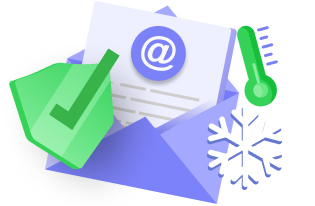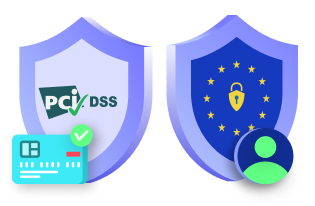Does cold email outreach work? 79.1% of cold email senders say it is their top lead generation tactic. However, the EU’s General Data Protection Regulation (GDPR) mandates compliance for cold email marketers. By fortifying consumer privacy rights, it imposes strict rules around transparency, consent, and security. Noncompliance risks €20 million in fines, making adherence vital when contacting EU prospects. This guide enables effective, compliant cold mail outreach respecting GDPR’s tightened regulations. With the right strategies, one can drive results without violating intensified privacy laws. In this article, we will discuss the best practices for ensuring GDPR-compliant cold emails.
Understanding GDPR compliance
GDPR went into effect on May 25, 2018. It applies to any company that collects or processes the personal data of individuals in the European Union, regardless of whether the business has a physical presence there.
Understanding GDPR’s objectives and principles is essential if you want to craft cold emails with GDPR compliance. GDPR’s primary goals are to:
- Give EU citizens more control over their data.
- Simplify the regulatory environment by unifying data protection regulations across EU member states.
- Provide requirements for organizations to be more transparent about data collection and its use.
- Strengthen requirements around consent for collecting or processing data.
- Establish strong data security and breach notification requirements.
To understand GDPR further, here are its 7 fundamental principles:
- Fairness, lawfulness, and transparency: Data must be processed lawfully, fairly, and transparently about the data subject.
- Purpose limitation: Data can only be collected for specified, explicit, and legitimate purposes.
- Data minimization: Data collection should be limited to what is directly relevant and necessary for the specified purpose.
- Data accuracy: Data must be kept accurate and up to date.
- Storage limitation: Data no longer needed for the original purpose should not be stored longer than necessary.
- Integrity and confidentiality: Data must be processed securely and protected against unauthorized or unlawful processing, accidental loss, destruction, or damage.
- Accountability: The data collector should take responsibility for the data they retain and comply with all the above principles.
Cold email outreach in the GDPR era
Given that cold email outreach relies on accessing and storing prospect data, it is under the GDPR compliance jurisdiction.
So, here are some of the key challenges GDPR brings to the table in the cold email context:
- Obtaining consent: GDPR requires high standards for consent — you can no longer rely on assumed consent. Explicit consent is needed to process contact data.
- Managing opt-outs: Cold email recipients must be able to opt out or unsubscribe from future email communications easily – you need to honor such requests immediately.
- Data sources: Cold email lists must be compiled from lawful sources where individuals consented to share their data.
- Legally justifying unsolicited emails: Beyond consent, you may need other lawful justifications for processing contact data, like legitimate interest in the prospect’s cause.
- Transparency: Cold emails should contain clear information about data usage so that prospects understand how their information is processed.
- Data retention: Contact data should be deleted when no longer relevant for the marketing purpose.
While these challenges might sound intimidating, let’s examine some cold email best practices to simplify GDPR compliance.
Best practices for GDPR-compliant cold email outreach
While GDPR may complicate the process of building email lists and executing cold email campaigns: strategic navigation through these rules is a must if your prospects are from the EU.
Here are some best practices for carrying out GDPR-friendly cold email campaigns:
Define purpose
Sending cold emails can feel legally questionable, as you want to connect with prospects without violating their privacy rights. The key is having a transparent, legitimate reason for contacting someone unexpectedly.
Ask yourself two questions:
- How can this prospect benefit from my offer?
- Does this prospect match my ideal customer profile?
For example, say your company provides AI chatbot and virtual assistant solutions to automate customer support tasks. In this case, your ideal prospects would be customer support teams lacking these solutions.
The second part of the puzzle is crafting a message that showcases how a prospect can benefit from your offer:
Ultimately, you want to contact prospects that are most likely to purchase your product or service. You want to avoid targeting prospects that will be surprised by your email: as that may be considered a GDPR breach.
Document the source
As the GDPR stresses properly handling personal data, be prepared to explain how you obtained a prospect’s email.
For instance, most professionals scrape email addresses from LinkedIn or other reputable B2B databases. With this approach, you can build email lists while documenting exactly where each email came from if ever questioned.
You can also use email finder tools that scrape publicly available data to find relevant email addresses:
Provide unsubscription option
To achieve GDPR compliance, each cold email recipient should have a right to removal from your email list. That means each recipient needs an easy and swift way to unsubscribe from your emails.
An easy and quick way to do this is an unsubscribe link. The best practice is to add it at the bottom of your emails and comply with the recipient’s request for removal.
The unsubscribe link should have the following characteristics:
- It has a clear message.
- The process it facilitates is easy and does not have more than two steps.
- You remove the prospect’s data at the moment after receiving an unsubscribe request.
To automate this, use an email platform with a built-in unsubscribe link:
Regularly clean lead lists
Keep in mind that you shouldn’t store inactive leads indefinitely per GDPR standards. Knowing this, you should actively check unresponsive prospects and remove them from your list.
Additionally, inaccurate contact data can sneak into your database during outreach efforts. Use an email verifier tool to validate list accuracy and maintain proper information.
Ultimately, there are two reasons to keep your lead lists clean:
- To comply with GDPR
- To maximize email deliverability
Respond to requests
As 39% of consumers prefer clear information from companies about data usage, it’s no wonder that some prospects might question how you use their data.
The most common questions are how you accessed their emails and what other information you have stored.
However, if you follow the best practices outlined earlier:
- You should state explicitly where each email originated from
- Your prospect data should be kept in an organized, secure spreadsheet or CRM.
Honor consent and subscriber rights
Consent under the GDPR is strictly enforced. In essence, you: as an email marketer: must ensure that the consent can be freely given and withdrawn at any time by your email subscribers.
These two actions can be done by providing clear opt-out mechanisms in your emails and immediately honoring any unsubscribe requests.
By utilizing opt-outs and easy unsubscription mechanisms, you maintain GDPR compliance and also comply with some of the best practices for marketers doing cold outreach to EU-based prospects.
You should also be aware of the rights data subjects have under GDPR:
- Right of access: Ability to see what data a company has about them and how it is used.
- Right to rectification: Ability to correct inaccurate or incomplete personal data.
- Right to removal: Ability to request data removal (with some exceptions).
- Right to restrict processing: Ability to limit how data is used while a complaint is investigated.
Honoring these rights is an important piece of the GDPR compliance puzzle as well: you shouldn’t overlook them by any means.
Implement data security and storage
Over 4.5 billion online records were compromised only in 2023. Companies that store prospect data, due to their data collection and processing habits: are particularly prone to cyber-attacks. It’s no wonder GDPR greatly emphasizes marketers to provide appropriate data security for their data subjects.
The key requirements that GDPR imposes for data security and storage are:
- Encrypting data: Personal data should be encrypted when stored and in transit using industry-standard methods like TLS/SSL encryption.
- Access controls: Authentication, authorization, and access logs help control and monitor who can access stored data. Multi-factor authentication adds a layer of security required by GDPR.
- Data minimization – The minimum personal data needed for cold emailing should be collected and retained. Excess data should be deleted from your records.
- Limiting retention: Data should be stored only as long as needed for the specified cold emailing purpose.
- Breach notification: GDPR requires notifications to regulators and affected individuals within 72 hours of discovering a data breach.
- Data protection plans: Companies need systematic processes for handling data protection, risk assessments, and continued security improvements.
With the proper security strategies and culture, you can protect prospect data and comply with GDPR’s rigorous standards. Remember that this can be a work in progress, as cyber-attacks persist.
Tools for GDPR-compliant cold emails
To help you become more GDPR compliant in your cold email efforts, we have compiled a list of functions GDPR-compliant tools for cold email marketing should entail:
- Double opt-in: You want to have a double opt-in mechanism in place that sends a confirmation email to contacts after they subscribe to your email list, requiring them to click to consent to receive emails. MailChimp and Sendinblue offer exactly these features and might be just what you need.
- Email validation: Use an email verification tool like Hunter to identify and remove invalid, unsafe, and inactive emails from your lists.
- Privacy policies: You want to use a privacy policy generator like CookieYes to help you create a GDPR-compliant privacy policy. Of course, edit it based on your business use case.
- Consent management platforms (CMP): CMPs are used by businesses to legally document and manage contacts’ consent choices before collecting and processing their data. One of the most popular in the market is CookieYes CMP which is used for obtaining and managing consent from users for using cookies that may be used for email marketing.
Leveraging the right tool stack is essential to crafting a GDPR-compliant cold email campaign. These tools work best paired with strategic data policies as well.
Wrapping up
Navigating cold email outreach in the age of GDPR compliance may seem tough on paper, but it all comes down to several key things:
- Focus on being transparent about data collection and processing with your prospects.
- Make sure to obtain consent from your prospects.
- Let your users know they can unsubscribe from your email lists at any time.
- Use tools to help you with data encryption and additional protection.
- Follow GDPR best practices to avoid getting into unnecessary legal trouble.
Making GDPR central to your cold email strategy sets you up for sustainable, ethical results long-term. Don’t seek loopholes; seek compliance.
Author’s bio: Antonio Gabric is an outreach manager at Hunter. He is passionate about testing different outreach tactics and sharing results with the community. When he is not connecting with industry leaders you can find him on his motorbike exploring off-the-beaten paths around the world.
Disclaimer: This article is for general informational purposes only and should not be taken as legal or professional advice. The views and opinions expressed in this article are solely those of the author and do not necessarily reflect the views of our organization. We do not endorse any products or services mentioned in the article.







